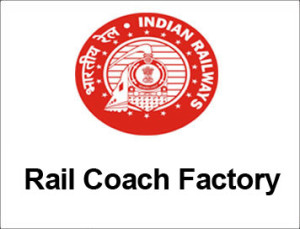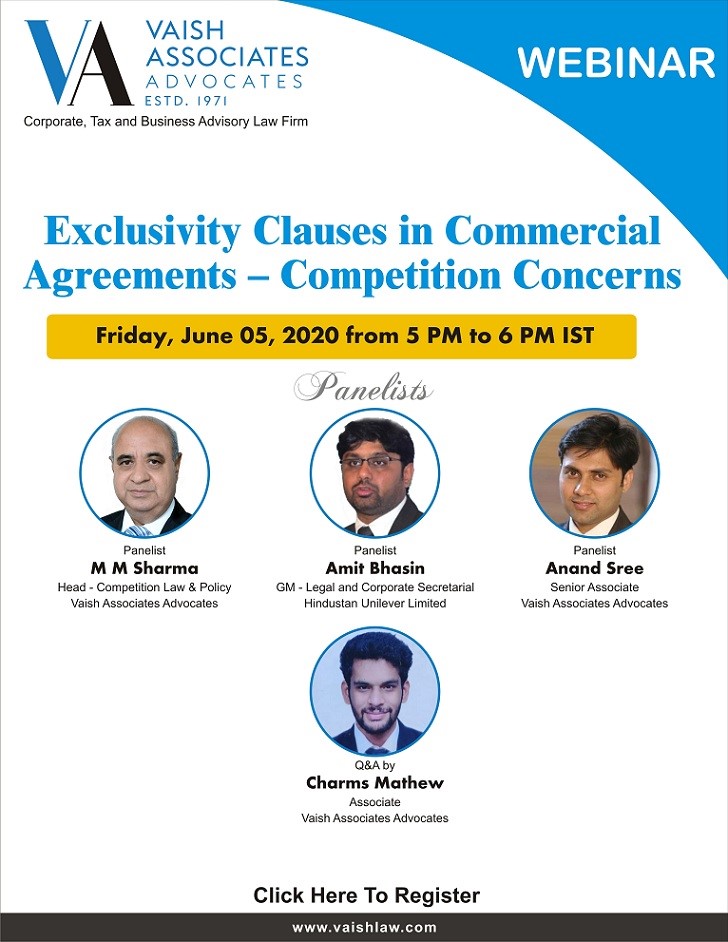CCI has reiterated importance of evidence to prove bid-rigging : mere identical pricing , including those by related companies held not sufficient.
The Competition Commission of India (‘CCI’) vide its order dated 28.11.2017 has exonerated nine RDSO approved suppliers (“Opposite Parties”) , including four sister companies, of allegations of bid-rigging in supply of roof mounted ac package unit for AC coaches to the Rail Coach Factory, Kapurthala , citing insufficient evidence, despite there being instances of identical bidding by the parties. The CCI held that, in the absence of cogent evidence, the collective increase or decrease in rates during the years 2011 to 2014 and the increase in rates in or after June 2013 by itself do not establish a case for contravention of the provisions of Section 3(3) (a) and 3(3) (d) read with Section 3(1) of the Competition Act, 2002 (the Act) .
The CCI in the present case reiterated its ratio decidendi in two earlier decided cases of Shri B. P. Khare, Principal Chief Engineer, South Eastern Railway v. M/s Orissa Concrete and Allied Industries Ltd & Ors, Ref. Case 05/2011 and the Competition Appellate Tribunal’s decision in Escorts Limited v Competition Commission of India & Anr, (Appeal no.13 of 2014 decided on 18.12.2015) that mere identical pricing is not sufficient to establish a case of cartel formation.
Further, the CCI has also widened the scope of “bid-rigging” to include collusion between subsets of bidders that is closely held or sister companies having common management/promoters and has held that even if a subset of bidders collude amongst themselves, it would be a violation of Section 3(3)(d) of the Act, if such conduct inter alia reduces competition. This case is also significant in that, the CCI relied on its recent decision on single economic entity in re Delhi Jal Board V. Grasim Industries Ltd. & Ors, Ref. Case No. 03 & 04/2013 to distinguish procurement markets, holding that where two or more entities of the same group decide to separately submit bids in the same tender, they have consciously decided to represent themselves to the procurer that they are independent decision making centers and independent options for procurement. Accordingly, the defense if ‘single economic entity’ expounded by the four related Opposite parties was rejected.
Facts
The proceedings before the CCI were initiated on a reference filed by the Chief Material Manager, Rail Coach Factory, Kapurthala (‘RCF’) under Section 19(b) of the Competition Act, 2002 (Act) that post July 2013, there was an abnormal increase in the rates vis-à-vis LPR (Last Price Quoted) by the Opposite Parties (OPs) namely M/s Daulat Ram Engg & Services P. Ltd., Madhya Pradesh (OP-1); M/s Daulat Ram Industries (OP-2); M/s Amit Engineers (OP-3), M/s Fedders Lloyd Corporation (OP-4), M/s Intec Corporation (OP-5), M/s Lloyd Electric and Engg. Ltd. (OP-6), M/s Sidwal Refrigeration Industries Ltd. (OP-7), M/s Stesalit Ltd. (OP-8) and M/s Ess Ess Kay Engg. Co. P. Ltd. (OP-9) in the tenders floated by the RCF for procurement of roof mounted ac packaging units. The OPs were manufacturers of roof mounted ac package unit (‘RMPU’) for Hofman Busch coaches and conventional AC coaches. The DG on investigation of the allegations levelled by RCF exonerated OP-1, OP-2, OP-8 and OP-9 but concluded a violation of Section 3(3)(a) read with Section 3(3)(d) of the Act against OP-3, OP-4, OP-5, OP-6 and OP-7. The DG examined total 89 tenders for supply of RMPU for four categories of railways AC coaches during the period 2011 to 2014 .
Noticeably, OP 4/OP 6 and OP 5/OP 7 were “sister concerns” / part of the same group headed by the same Chairman and Managing Director/ same family group sharing certain basic facilities and their bids submitted , that is, under common managements and their rates were identical in some tenders .
Summary of findings
The CCI in addition to examining the conduct of all the OPs collectively, also examined the conduct of a “subset” of bidders i.e OP-6 & OP-7, OP-4 & OP-6, OP-5 & OP-7 and OP-3, OP-5 & OP-7, where instances of identical pricing was observed. It was observed by the CCI, that the concept of “bid rigging” envisaged under the Explanation to Section 3(3) of the Act, even includes an agreement which has the effect of reducing competition for bids or adversely affecting or manipulating the process of bidding. Therefore, even if a subset of bidders collude amongst themselves, it would be a violation of Section 3(3)(d) of the Act, if such conduct inter alia reduces competition. Accordingly, the CCI emphasized on the “intent” as “outcome” of any such alleged collusion.
The DG in his investigation report, arrived at a finding of collusion between OP- 6 and OP- 7, on the basis of identical prices quoted by them in one tender dated 30.07.2009. The CCI, however, rejected this finding on the ground of insufficient evidence by noting that no plus factors have been identified to support the finding of collusive behavior, and that DG’s proposed theory of how OP-6 and OP-7 should have ideally behaved cannot be considered as a plus factor.
Similarly, there was one instance of identical pricing by OP-4 and OP-6 in the tender dated 12.5.2011 and the DG supported his finding of meeting of minds on the fact that they are sister companies headed by the same Chairman and Managing Director and run by the same management. However, the CCI again concluded that this was was insufficient evidence to conclude a contravention of Sections 3(3)(a) and 3(3)(d) read with Section 3(1) of the Act.
With respect to OP-5 and OP-7, the DG found two instances of identical pricing. However, the CCI observed that sporadic instances of identical/ similar pricing of homogenous product coupled with the bidders’ knowledge of prices quoted in previous tenders, cannot be an evidence of ‘meeting of minds’. As a result, neither the intention behind nor the consequence of the collusive behavior can be ascertained.
The CCI further observed that parallel behaviour of competitors can be a result of intelligent market adaptation in an oligopolistic market and that it is illegal only when such conduct was on the basis of information exchanged between the competitors, the object of which is to influence the market. Accordingly, instances of identical pricing reveal is indicative of collusion, only when it is the only plausible explanation to the conduct of the OPs.
The CCI also cautioned against arriving at a finding of contravention based merely on suspicion emanating from identical or similar pricing coupled with evidence of possibility of exchange of information. Accordingly, in the present case, it was held that although the DG has found few instances of identical / similar pricing by different sets of these OPs, the investigation report falls short of providing clarity as to how such pricing was an outcome of collusion. In the instant case, although identical and similar pricing by different sets amongst OP-3 to OP-7 in some tenders out of the eighty nine (89) tenders floated by the Informant and other production units or Zonal Railways of the Indian Railways during the years 2011 to 2014, coupled with the collective increase/ decrease in rates and other factors such as the common management of OP-4 and OP-6 and same partners and directors in OP-5 and OP-7 raise suspicion of collusion, in the absence of sufficient cogent evidence, it cannot be conclusively said that OP-3, OP-4, OP-5, OP-6 and OP-7 have contravened the provisions of Sections 3(3)(a) and 3(3)(d) read with Section 3(1) of the Act to the exclusion of all OPs.
Comment
The present order has widened the scope of “bid-rigging” to also include instances where subsets of bidders , comprising of sister concerns under common managements, collude amongst themselves. The CCI has held that such instances reduce competition for bids and ,therefore, may constitute bid-rigging in terms of the Explanation to Section 3(3) of the Act. However, it appears that in order to establish collusion between such subsets of bidders, the ‘intent” and ‘outcome’ behind such collusion need also be established, since such collusion may not necessarily result in such bidders emerging as the L-1 bidder. Therefore, an investigation into the benefit accrued to such OPs should also have been examined to prove “meeting of minds”.








